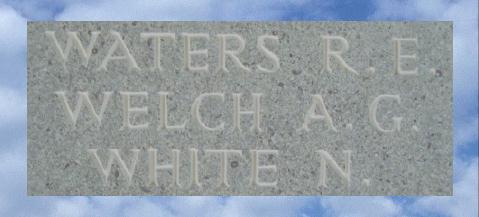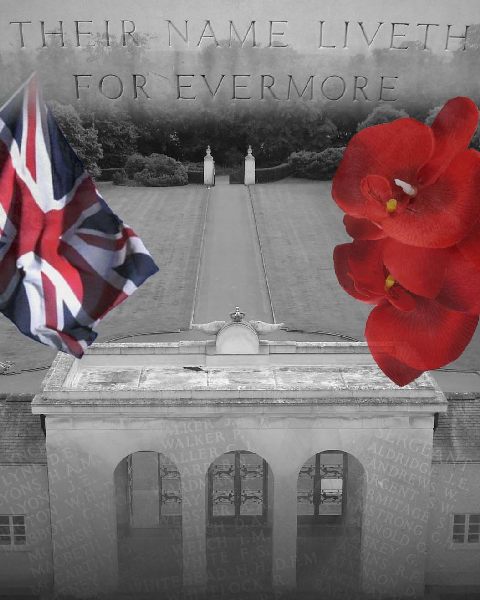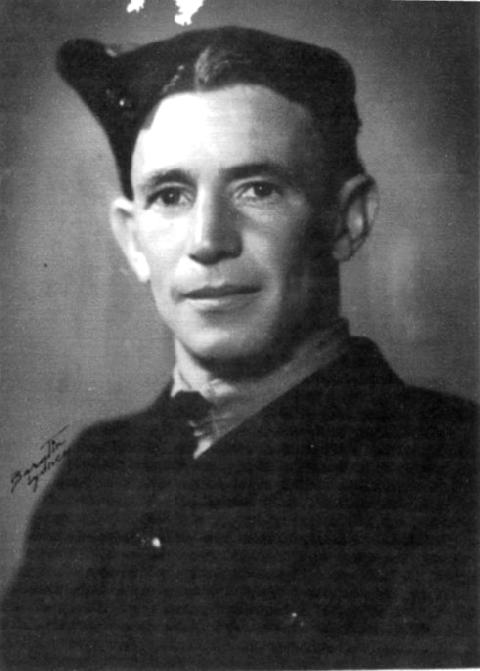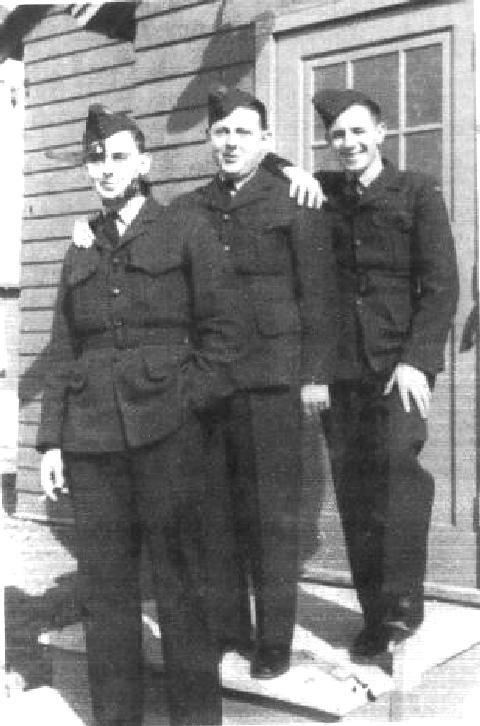Personnel Index - Detail

Part of the panel at Runnymede


30/31 May, 1942; COLOGNE (THE FIRST 1,000 BOMBER RAID)
The Squadron was able to detail 13 aircraft, but 1 became unserviceable and had to be withdrawn. The maximum effort required resulted in 83 Squadron borrowing 3 Manchesters from 49's Conversion Flight. With a full moon beginning to rise, 49's Manchesters (along with 13 Lancasters from 83 Squadron) started taking off from Scampton at 22.50hrs. A record 1,047 aircraft were dispatched, of which sadly, a record 41 failed to return.
P/O John Carter (L7429) and crew came down in the North Sea. The crew remain officially 'missing without trace'; they are remembered on the Runnymede Memorial.
Manchester L7429
P/O J.P. Carter Pilot (Missing)
F/S D. Block 2nd Pilot (Missing)
Sgt G.C. Haynes NAV (Missing)
Sgt L.J. Yeates W/AG (Missing)
Sgt M.S. Ash A/G (Missing)
Sgt A.G. Welch RAAF A/G (Missing)
Sgt J.C. Ramsey A/G (Missing)

Additional information kindly provided by Nicholas Welch (Arnold Welch was his great uncle)
Arnold first applied for selection as Air Crew on 1 February 1940. Arnold had left school at 16 having completed his Intermediate Certificate and obtaining passes in English, mathematics, geometry & trigonometry, geography, British history and algebra. He had studied for six months for the leaving Certificate at Bright Higher Elementary school, but did not sit the exam. Upon leaving school, Arnold had been working as a barber, then moved to the State Electricity Commission (S.E.C) and finally the Forest Commission. Less than six months after applying, his application had been accepted and Arnold was formally enrolled in the RAAF reserve on 1 July 1940.
Arnold traveled to Melbourne and formally enlisted in the RAAF, signing up at No.1 Recruiting Centre on October 13 1940, less than a month before his 26th birthday. After signing up, recruits were subject to a series of medical and literacy tests. The Defense Records show Arnold passed all the necessary tests, he was accepted into training and given the rank of ACII Air Crew V(G).
Arnolds training began with a posting to No.2 Initial Training School (ITS) at Lindfield in NSW on 14 October 1940. Arnold graduated from No.2 ITS on 9 November 1940 and was promoted to Leading Aircraftsman (LAC).
On completion of ITS training, Arnold was posted to No.2 Embarkation Depot RAAF at Bradfield Park. He departed from Sydney for further aircrew training in Canada on 29 November 1940, arriving in Canada on 23 December 1940.
On arrival in Canada, Arnold was attached to the Royal Canadian Air Force (RCAF) and posted to No.4 Training Command (RCAF) in Western Canada, which covered the provinces of Alberta, British Colombia and Southern Saskatchewan with its Headquarters based in Calgary, Alberta. He trained as a Wireless Operator/Air Gunner (WO/AG). Arnold attended No. 2 Wireless School in Calgary, Alberta from 6 January 1941 until 23 May 1941 and RCAF Individual Flying Records show he logged a total of 8 hours and 55 minutes as wireless operator (and 1 hour and 35 minutes as passenger) during training.
On completion of wireless operator training Arnold undertook four weeks of Air Gunner training with No.2 Bombing and Gunnery School in Mossbank, Saskatchewan. Over the four weeks, Arnold logged 7 hours and 55 minutes as Air Gunner (and 3 hours and 25 minutes as passenger). With a total of 21 hours 50 minutes flying time and having completed both training phases, Arnold graduated as a Wireless Operator Air Gunner on 23 June 1941.
On receiving his WO/AG badge, Arnold was promoted to Sergeant and departed from "M" Depot at Halifax in Nova Scotia, for the UK on 6 July 1941.
Arnold disembarked at Liverpool in the UK on 29 July 1941 and was transported by train south to the RAF 3 Personnel Reception Centre (3 PRC) at Bournemouth on the South Coast to wait for posting to another training unit. After a short leave period, training continued for Arnold with a transfer to No.2 Signals School at Yatesbury on 6 August 1941.
On 30 September 1941 Arnold moved closer to active service with Bomber Command, being posted from No.2 Signals School to No.14 Operational Training Unit (OTU) at Cottesmore. No.14 OTU was equipped with Handley Page Hampden aircraft and had the primary objective of training bomber aircrew for active service and teaching night navigation techniques. RAAF records show that Arnold spent 6 months with No.14 OTU before being qualified for active service and posting to a Squadron. On 30 March 1942 Arnold completed all training and was posted from No.14 Operational Training Unit to 49 Squadron at Scampton.
On 23/24 April, 1942 a small force of 5 Group aircraft from 49 Squadron went after the Heinkel aircraft factory just outside the town of Rostock, Germany. 49 Squadron briefed 3 crews for the Heinkel attack, with take-off set at 21.45hrs. Bob Hamer (AT227) lifted the last of the 3 Hampdens detailed off Scamptons' grass runway at 21.47hrs. The Hamer crew (including Arnold Welch) had the honour of being the last 49 Squadron Handley Hampden crew to take-off on an operational sortie.
On the night of 30/31 May 1942, the first thousand bomber raid over Cologne, 1,047 aircraft were dispatched, and 49 Squadron was able to detail 13 aircraft, but 1 became unserviceable and had to be withdrawn. 49 Squadrons' Manchesters (along with 13 Lancasters from 83 Squadron) started taking off from RAF Scampton at 22.50 hrs.
A record 1,047 aircraft were dispatched, of which sadly, a record 41 failed to return, including L7429.
